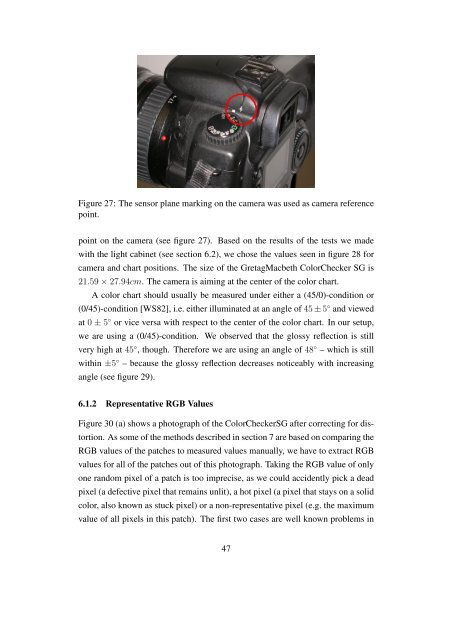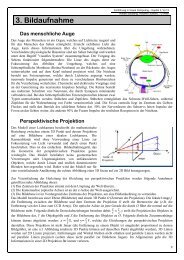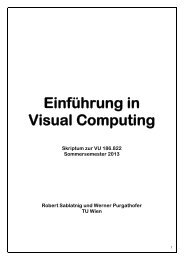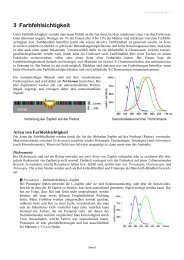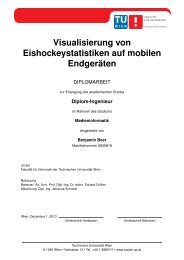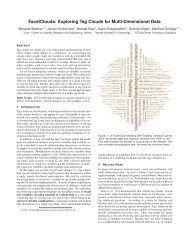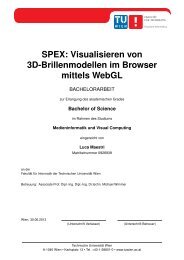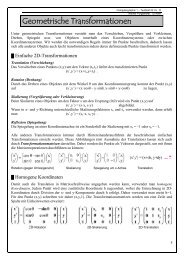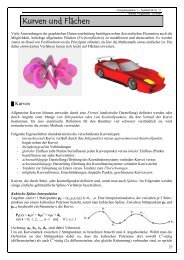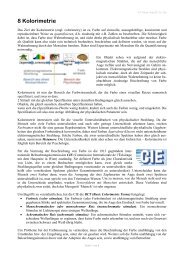Usability of Digital Cameras for Verifying Physically Based ...
Usability of Digital Cameras for Verifying Physically Based ...
Usability of Digital Cameras for Verifying Physically Based ...
You also want an ePaper? Increase the reach of your titles
YUMPU automatically turns print PDFs into web optimized ePapers that Google loves.
Figure 27: The sensor plane marking on the camera was used as camera reference<br />
point.<br />
point on the camera (see figure 27). <strong>Based</strong> on the results <strong>of</strong> the tests we made<br />
with the light cabinet (see section 6.2), we chose the values seen in figure 28 <strong>for</strong><br />
camera and chart positions. The size <strong>of</strong> the GretagMacbeth ColorChecker SG is<br />
21.59 × 27.94cm. The camera is aiming at the center <strong>of</strong> the color chart.<br />
A color chart should usually be measured under either a (45/0)-condition or<br />
(0/45)-condition [WS82], i.e. either illuminated at an angle <strong>of</strong> 45 ± 5 ◦ and viewed<br />
at 0 ± 5 ◦ or vice versa with respect to the center <strong>of</strong> the color chart. In our setup,<br />
we are using a (0/45)-condition. We observed that the glossy reflection is still<br />
very high at 45 ◦ , though. There<strong>for</strong>e we are using an angle <strong>of</strong> 48 ◦ – which is still<br />
within ±5 ◦ – because the glossy reflection decreases noticeably with increasing<br />
angle (see figure 29).<br />
6.1.2 Representative RGB Values<br />
Figure 30 (a) shows a photograph <strong>of</strong> the ColorCheckerSG after correcting <strong>for</strong> dis-<br />
tortion. As some <strong>of</strong> the methods described in section 7 are based on comparing the<br />
RGB values <strong>of</strong> the patches to measured values manually, we have to extract RGB<br />
values <strong>for</strong> all <strong>of</strong> the patches out <strong>of</strong> this photograph. Taking the RGB value <strong>of</strong> only<br />
one random pixel <strong>of</strong> a patch is too imprecise, as we could accidently pick a dead<br />
pixel (a defective pixel that remains unlit), a hot pixel (a pixel that stays on a solid<br />
color, also known as stuck pixel) or a non-representative pixel (e.g. the maximum<br />
value <strong>of</strong> all pixels in this patch). The first two cases are well known problems in<br />
47


